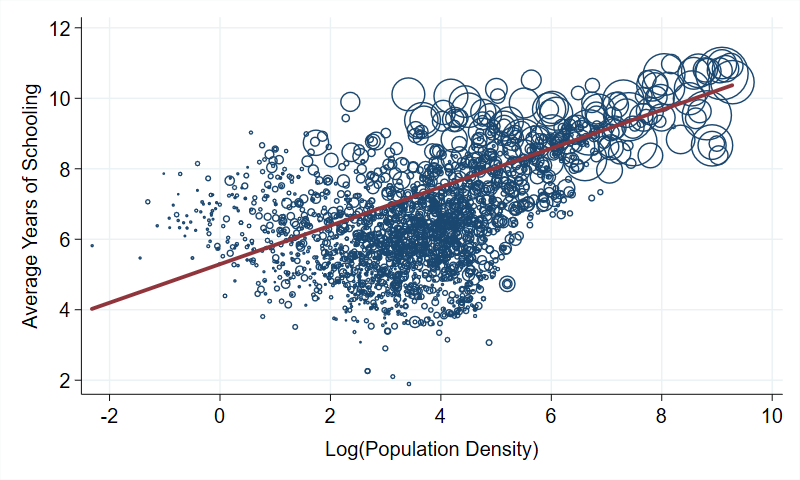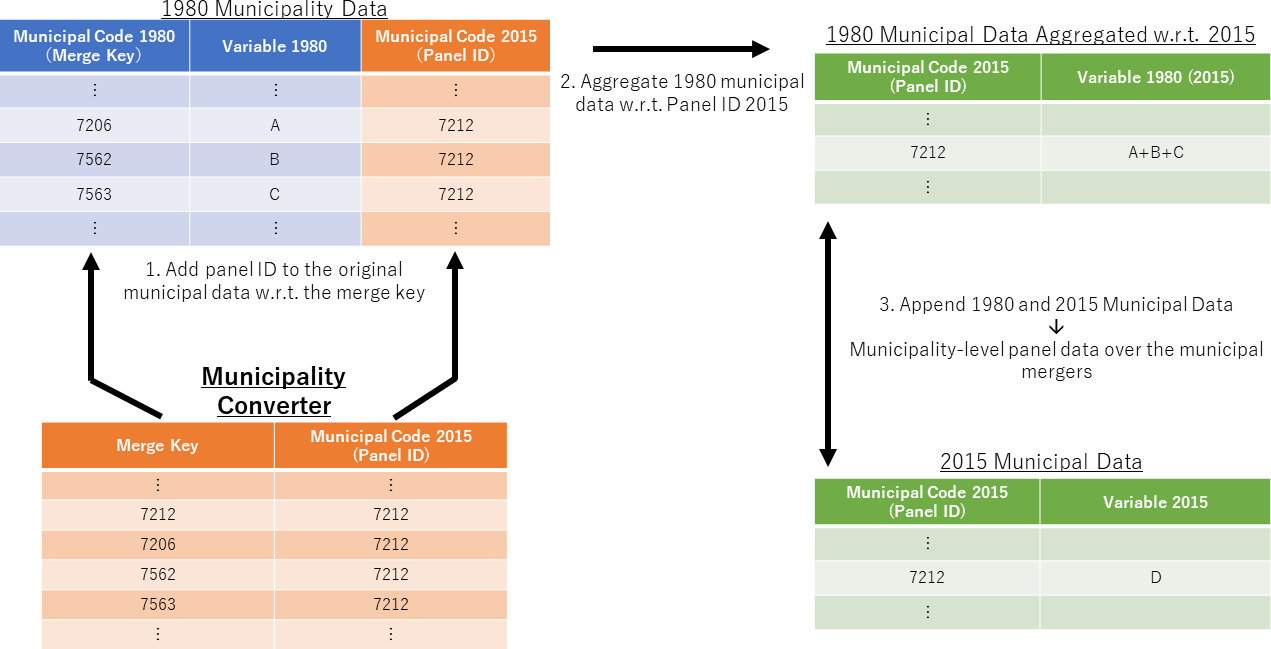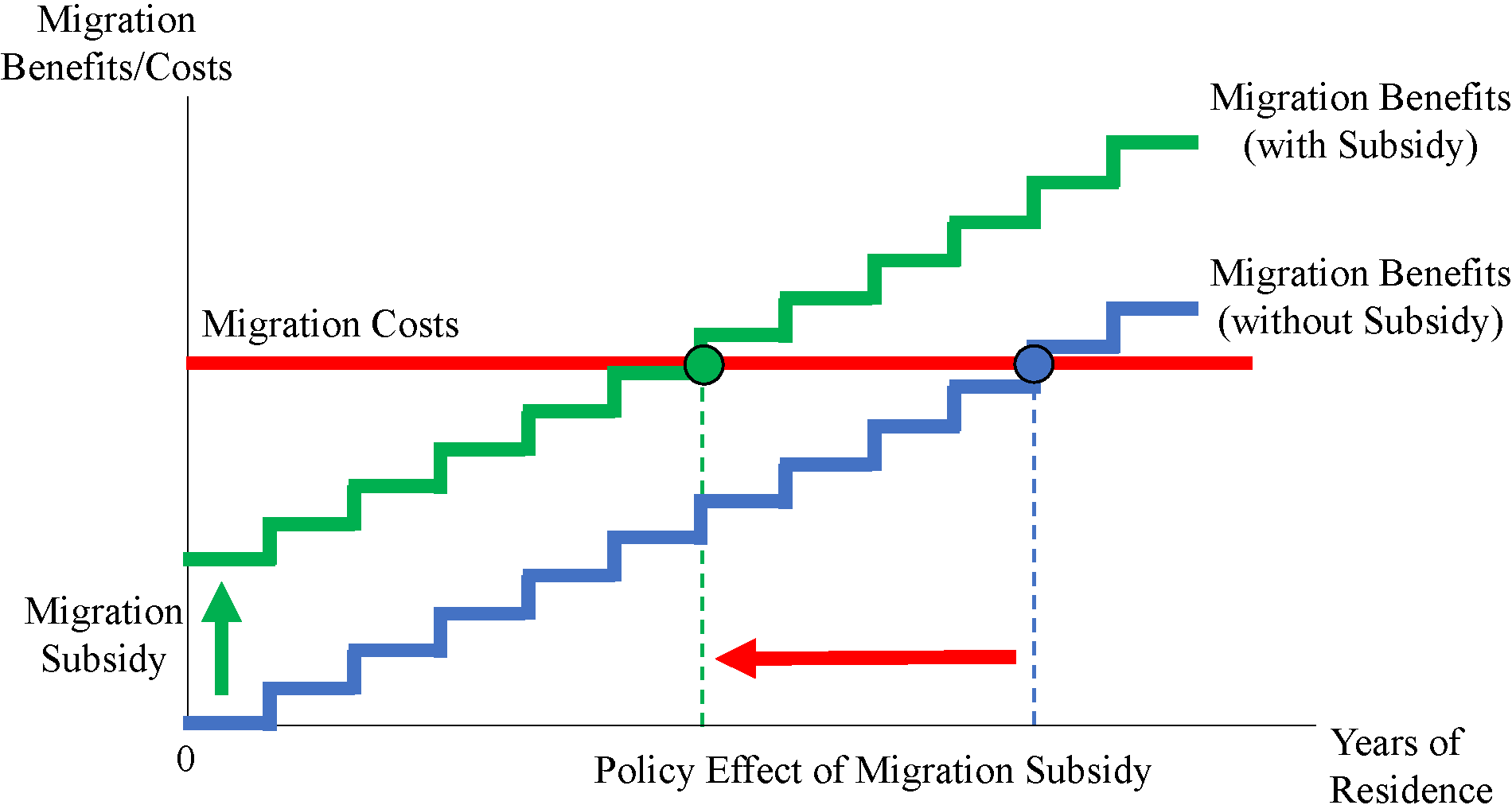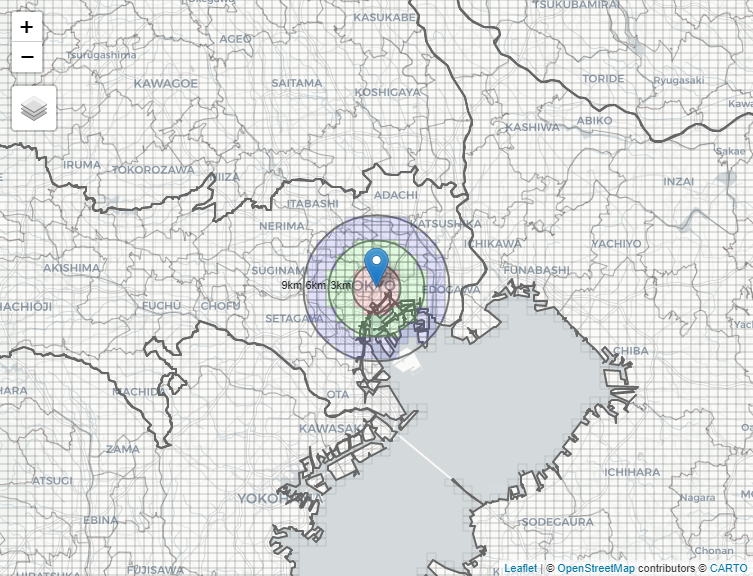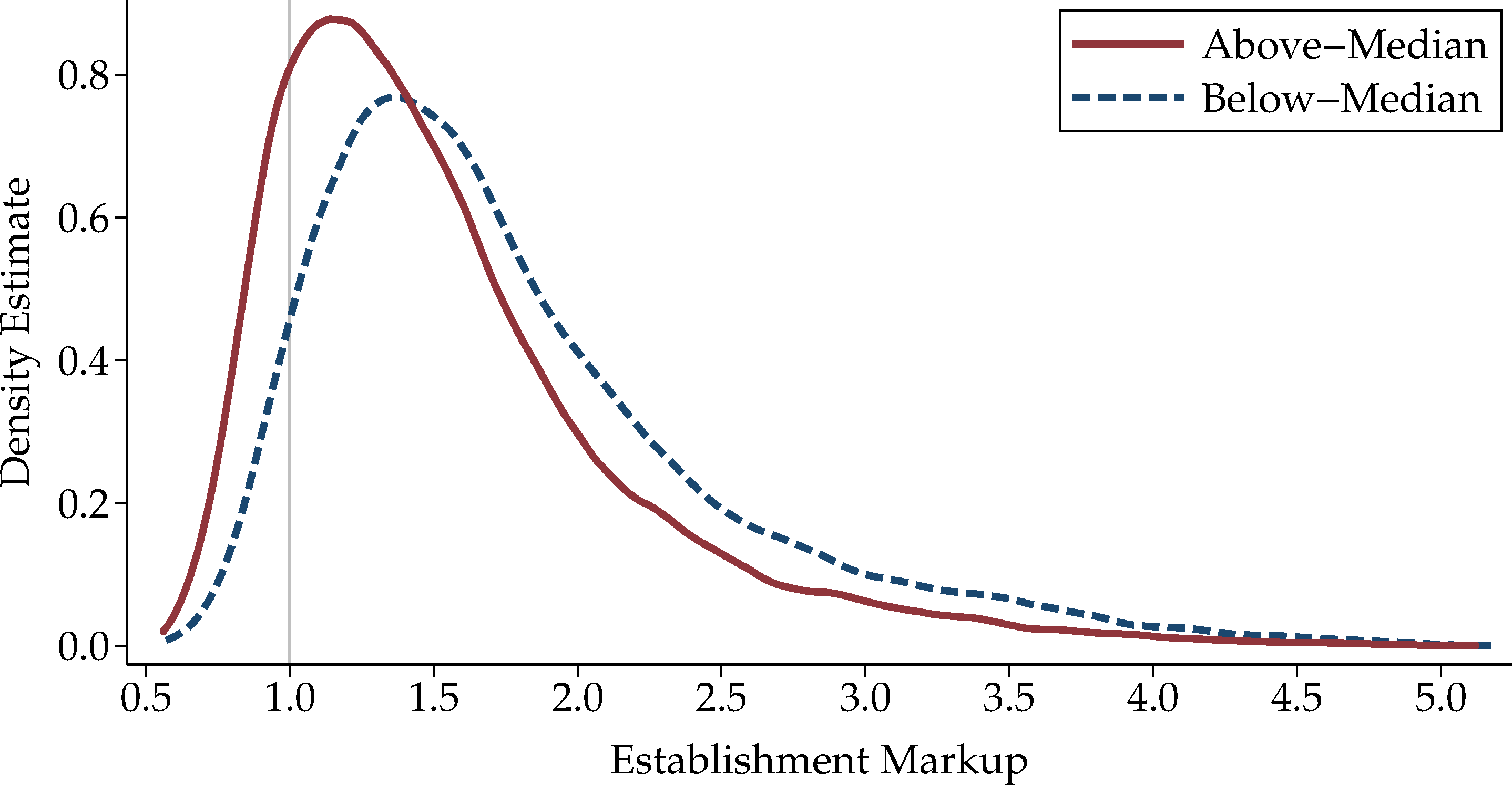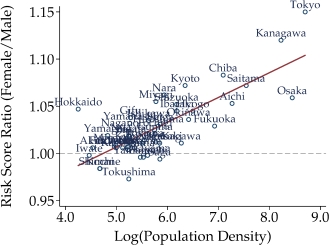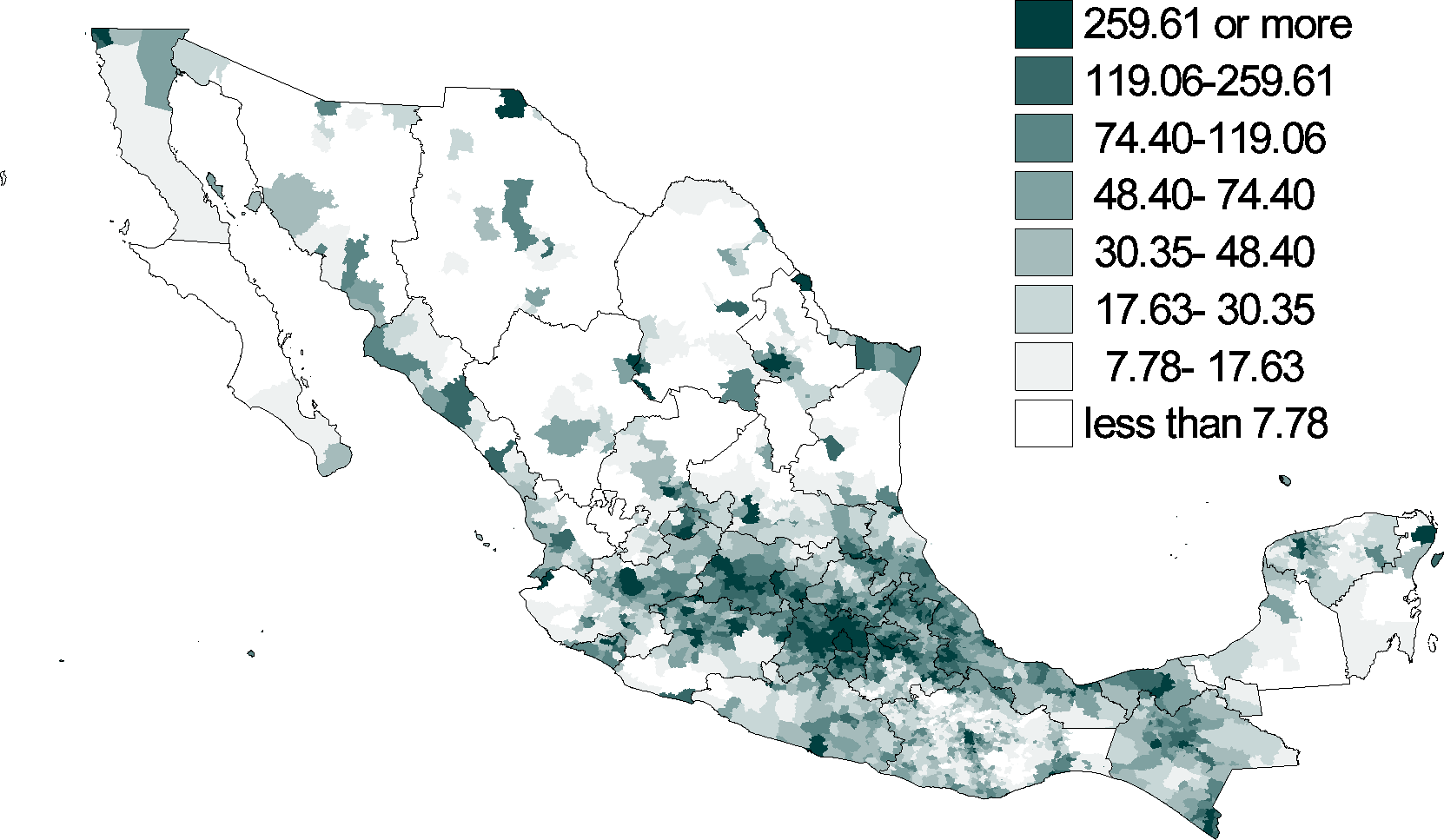Works in Progress
A proposal for a regional attractiveness index based on human flow data
Kondo, Keisuke. RIETI Policy Discussion Paper No. 24-P-005. (2024)
Link Link (jp) Supplementary MaterialAs Japan is facing a declining population, there are fears that rural areas may disappear in the future due to a decrease in the population as residents through outmigration. On the other hand, there are still many attractive regions in rural areas that attract many people from outside, and it is necessary to re-evaluate regional values and sustainability from a different perspective. This study attempts to develop a novel indicator to quantify the regional attractiveness as a destination in a way that is not dependent on the size of the population as a place of residence. In the context of regional revitalization, this index is closely linked to creating a related population, as it is sometimes likened to more than tourism and less than immigration. The regional attractiveness index proposed by this study quantifies the attractiveness of trip destinations as a force that draws people from further away, using big data on people flow from "Mobile Spatial Statistics" (NTT Docomo) obtained through the RESAS API, from September 2015 to August 2016. In addition, a regional attractiveness index visualization system was developed as a web application to facilitate the social implementation of academic research. The possibility of using this system for agile policy formation and evaluation in regional revitalization will also be discussed.
Distinguishing the urban wage premium from human capital externalities: Evidence from Mexico
Kondo, Keisuke. RIEB Discussion Paper Series No. 2024-09. (2024)
LinkThis study bridges the gap between the urban wage premium and human capital externalities. Merging the worker-level microdata with the geographical data in Mexico and taking the two-step approach of the Mincer wage equation, this study finds that the spatial sorting and human capital externalities entirely explain the urban wage premium in Mexico. This study finds heterogeneous effects of human capital externalities on wages between high- and low-skilled workers. Low-skilled workers benefit from human capital externalities, whereas high-skilled workers do not. Instead, high-skilled workers get more than twice as high private return to education anywhere they work as low-skilled workers.
Local export spillovers within and between industries in Japan
Kondo, Keisuke. RIETI Discussion Paper No. 23-E-090. (2023)
Link Link (jp) Non Technical Summary (jp)This study empirically tests the hypothesis that neighboring exporters increase the probability of export market entry (extensive margin) and export values (intensive margin). As mentioned in the international trade literature, export initiation requires additional fixed entry costs, and therefore, a high productivity is required to earn a positive profit. If neighboring establishments are already exporting, the necessary information for initiating exports is available in those areas, thus lowering entry costs. Prior studies provide mixed evidence on local export spillovers and need further validation. Using panel data on Japanese manufacturing establishments, this study provides evidence regarding intra-industry local export spillover effects on the extensive and intensive margins of exports; however, evidence concerning inter-industry local export spillovers is limited.
This study proposes a novel concept of a regional attractiveness index based on human mobility flows. Assuming that individuals’ mobility choice is based on utility maximization, this study aims to recover the attractiveness of trip destinations by estimating the gravity equation for interregional trip flows. Using mobility data from a Person Trip Survey and mobile phone data in the Kansai region of Japan, this study investigates whether different trip purposes (e.g., commuting to office and school, recreational trips, business trips, and returning home) and seasonal and tourism factors (e.g., holidays, events, and amusement facilities) can reveal spatial and temporal variations in the attractiveness of trip destinations. This study found that the proposed approach using interregional trip flows can effectively capture the extent to which trip destinations attract people from a region-wide perspective. As real-time human mobility data become increasingly available, the new index of regional attractiveness is expected to become a key performance indicator for daily monitoring of urban and regional economies.
Municipality-level panel data and municipal mergers in Japan
Kondo, Keisuke. RIETI Technical Paper No. 23-T-001. (2023)
This is the English version of the Japanese Technical Paper (19-T-001) with some additional information and changes.
Link Link (jp) Japanese Version Shiny AppThis paper explains a method of constructing municipality-level panel data for Japan for the period of 1980–2020. Municipal mergers conducted in the mid-2000s, which are collectively known as “the Great Mergers in the Heisei era,” resulted in a reduction of almost half of the number of Japanese municipalities. The significant changes in administrative borders resulting from these municipal merges cause difficulties in constructing municipality-level panel data. To address this problem, this paper proposes a method of aggregating municipalities as a collective geographical unit that remains identical over decades.
Ex ante evaluation of migration subsidy: Evidence from Japan
Kondo, Keisuke. RIETI Policy Discussion Paper No. 22-P-031. (2022)
A previous version of the paper was circulated under the title "Monopolar concentration in Tokyo and promotion of urban-to-rural migration" (RIETI PDP 19-P-006).
Link Shiny App Link (jp) EBPM Report (jp) Shiny App (jp) Previous VersionThis study proposes a simple framework for the ex ante evaluation of migration subsidy. Recently, the Japanese government initiated a migration subsidy program to promote urban-to-rural migration for regional revitalization under the economy with a monopolar concentration in Tokyo. The ex ante evaluation framework proposed in this study formulates the payback period of interregional migration as investment behavior. In the model, households compare the sum of the expected benefits available each year after migration with the lump-sum costs of migration, which are estimated with structural estimation using the interregional migration flow data. The migration subsidy leads to an incentive for interregional migration by reducing the payback period. This study finds that households incur different migration costs at each stage of life, implying that a uniformly determined migration subsidy may have different policy effects. Counterfactual simulations provide scientific insight into the potential impact of the migration subsidy program, helping policymakers determine the optimal amount under the budget constraint.
Spatial gaps in minimum wages and job search of young workers
Hamaguchi, Nobuaki and Kondo, Keisuke. RIETI Discussion Paper No. 22-E-022. (2022)
Link Link (jp) Non Technical Summary (jp)This study examines the extent to which spatial gaps in real minimum wages affect the location choice in job search of new high school graduates in Japan. We exploit the exogenous shock related to the 2007 amendment of the Minimum Wage Act which expanded variations in real minimum wage between urban and rural prefectures. We propose Bartik-like instruments for differential exposure to these shocks to perform a causal inference of the impact of spatial gaps in real minimum wages on the location choice in job search of unskilled young workers. Our estimation results show that the real minimum wage gaps partially motivate job search outside resident prefectures. Our counterfactual evaluation for the uniform minimum wage across prefectures shows that approximately 10-25% of new high school graduates in rural prefectures seek jobs outside their resident prefectures even under the uniform minimum wage setting. This result suggests that the simple correlation overestimates the impact of minimum wage on outmigration because other factors than wages such as urban amenity may explain spatial behavior in job search.
The spillover effects of compact city policy on incumbent retailers: Evidence from Toyama city
Iwata, Shinichiro and Kondo, Keisuke. RIETI Discussion Paper No. 21-E-085. (2021)
Link Summary (jp) Previous VersionThe compact city policy of Toyama City, Japan, aims to encourage density in both the city center and suburban hubs linked by public transport systems. The policy framework relates to the place-based policy, which targets geographic underperforming zones. Several town developments projected by this policy, including the development of housing, public and commercial facilities, and public transport systems, are conducted to increase the attractiveness of the target zones. Retail revitalization is then expected as a spillover effect through increasing market size. Using a difference-in-difference matching estimation with establishment-level panel data, this paper evaluates the policy impact on incumbent retailers located in the target zones, corresponding to the treatment group. The empirical results demonstrate that while the policy effects are not observed in the short run, the policy has a positive impact on both inputs and outputs for incumbent retailers in the long run. The existing policy framework, however, does not generate positive spillover effects on incumbent retailer productivity.
The impact of market size on firm selection
Kondo, Keisuke and Okubo, Toshihiro. RIETI Discussion Paper No. 20-E-053. (2020)
Link Summary (jp)This study analyzes how local market size affects the probabilities of firm exit by focusing on single-establishment firms in the service sector. The novelty of this study is that it identifies geographic ranges of local markets using the matched data of geocoded firm location and micro-geographic data with detailed firm exit information of all Japanese firms. The results reveal that the probability of firm exit increases as local market size increases within a narrow range (3 km radius) in the service sector. We also find that small firms tend to leave the market. Our results suggest that firm selection is stronger in larger markets, where larger firms are more likely to survive.
The revitalization of shrinking cities: Lessons from the Japanese service sector
Kondo, Keisuke and Okubo, Toshihiro. RIETI Discussion Paper No. 20-E-050. (2020)
Link Summary (jp)This study evaluates urban policy on revitalization in city centers focusing on the Japanese service sector. Many Japanese cities have experienced a decline in population and economic activity in city centers. The 2006 Amended Act on Vitalization in City Centers shows a renewed effort toward city center revitalization. Local governments that applied for the related subsidies have implemented policies in targeted areas (generally, the area surrounding the main train station) to attract residents and employment from the suburbs and to revitalize economic activity. Using matching difference-in-differences estimations, this study finds that revitalization policies have improved the economic performance of service establishments only in city centers of regional core cities, but finds no evidence of similar effects in regional non-core cities.
A structural estimation of the disutility of commuting
Kondo, Keisuke. RIETI Discussion Paper No. 20-E-031. (2020)
Link Summary (jp)This study evaluates the disutility of long-distance commuting by structurally estimating a random utility model of commuting choice. Using estimated structural parameters for commuting preferences and considering the factors that produce heterogeneity across workers, the study quantifies the extent to which workers incur disutility from commuting under a counterfactual scenario in which they commute the same distance before and after marriage. Using inter-municipal commuting flow data in Japan, the counterfactual simulations uncover a significant gender gap in the disutility of commuting, particularly because having children after marriage greatly increases the disutility of commuting for female but not for male workers. Residential relocation plays a role in mitigating the disutility of commuting for female workers, implying that the additional disutility that arises after marriage can be offset through endogenous residential location choice.
The costs of urban agglomeration: Evidence from the inbound tourism boom in Japan
Kondo, Keisuke. RIETI Discussion Paper No. 19-E-106. (2019)
Link Summary (jp)This study evaluates urban policy on revitalization in city centers focusing on the Japanese service sector. Many Japanese cities have experienced a decline in population and economic activity in city centers. The 2006 Amended Act on Vitalization in City Centers shows a renewed effort toward city center revitalization. Local governments that applied for the related subsidies have implemented policies in targeted areas (generally, the area surrounding the main train station) to attract residents and employment from the suburbs and to revitalize economic activity. Using matching difference-in-differences estimations, this study finds that revitalization policies have improved the economic performance of service establishments only in city centers of regional core cities, but finds no evidence of similar effects in regional non-core cities.
Markup and market size: Evidence from Japan
Kondo, Keisuke. RIETI DP No. 18-E-017. Revised. (2020)
Link Summary (jp)This study empirically investigates how market size affects markups in the Japanese manufacturing sector. Recently developed models on monopolistic competition with endogenous price-cost markups show that markups in larger markets are lower because competition is stronger. This study proposes a new empirical approach to identify the effective geographical ranges of market competition that affect markups in the tradable goods sector. The approach in this study is novel because market size is measured as the market potential within the threshold distance from 100 km to 1,000 km. This study finds both the size of the market in closer proximity to the production location and the size of the distant market affect markups, suggesting that manufacturing establishments face stronger competition in geographically wider markets.
Regional employment and artificial intelligence in Japan
Kondo, Keisuke and Hamaguchi, Nobuaki. RIETI DP No. 18-E-032. (2018)
LinkThis study investigates employment risk caused by new technology, such as artificial intelligence (AI) and robotics, using the probability of computerization by Frey and Osborne (2017) and Japanese employment data. The new perspective of this study is the consideration of regional heterogeneity in labor markets due to the uneven geographical distribution of occupations, which is especially observed between male and female workers. This study finds that female workers are exposed to higher risks of computerization than male workers, since they tend to be engaged in occupations with a high probability of computerization. This tendency is more pronounced in larger cities. Our results suggest that supporting additional human capital investment alone is not enough as a risk alleviation strategy against new technology, and policy-makers need to address structural labor market issues, such as gender biases for career progression and participation in decision-making positions, in the AI era to mitigate unequal risk of computerization between workers.
| # | Items | Download |
|---|---|---|
| Online Appendix | ||
| Online Supplement (English) | Excel | |
| Online Supplement (Japanese) | Excel | |
| Replication Code (Stata) | ZIP |
Urban wage premium revisited: Evidence from Japanese matched employer-employee data
Kondo, Keisuke. RIETI DP No. 17-E-047. (2017)
LinkRecent studies on the empirics of agglomeration economies have assumed a two-step channel of the urban wage premium in which agglomeration increases total factor productivity (TFP) and results in higher wages. Therefore, the present study empirically examines the validity of this two-step channel via TFP and investigates other channels of the urban wage premium by using matched employer-employee data in the Japanese manufacturing sector. The findings show that the standard wage regression approach used in the literature captures not only the TFP channel of the urban wage premium but also other effects (e.g., firm size effects on wage). Furthermore, when this TFP channel is quantified, the city size elasticity of wage becomes smaller than those in the existing literature. The implication of this study is that, by exploiting the features of the Japanese employment system, it is possible to obtain interesting results concerning the urban wage premium, especially in regard to basic pay and bonuses.
Dynamic benefits of working in large cities: Evidence from Japanese matched employer-employee data
Kondo, Keisuke. RIETI DP No. 17-E-043. (2017)
LinkThis study estimates wage and labor productivity profiles using a matched employer-employee dataset of the Japanese service industry. Our main concern is to uncover how work experience in large cities helps workers dynamically accumulate human capital, by comparing wage and labor productivity profiles. This study finds that longer work experience in larger cities steepens wage and labor productivity profiles, suggesting that upgrading skills by working in large cities provides dynamic benefits of agglomeration economies. Interestingly, this study finds different growth patterns between wage and labor productivity premiums. Labor productivity grows rapidly with longer work experience in large cities, but the growth of the labor productivity premium stops at about 15-20 years of work experience; in contrast, the wage premium grows gradually until about 35 years of work experience.
Testing for agglomeration economies and firm selection in spatial productivity differences: The case of Japan
Kondo, Keisuke. RIETI DP No. 16-E-098. Revised. (2017)
LinkThis study explores why firms, on average, are more productive in larger cities. One major explanation is that the higher firm productivity in larger cities is the result of agglomeration economies. However, recent studies have proposed an alternative mechanism of selection; namely, tougher competition in larger cities forces less-productive firms to exit and, as a result, more-productive firms operate in such locations. To distinguish agglomeration economies from firm selection, this study applies a newly suggested quantile approach to the Japanese manufacturing sector. Overall, the empirical results show that agglomeration economies, rather than stronger selection in larger cities, better explain spatial productivity differences in the Japanese manufacturing sector. The findings also show that benefits from agglomeration economies in this sector have decreased as interregional accessibility has increased.
Fresh brain power and quality of innovation in cities: Evidence from the Japanese patent database
Kondo, Keisuke and Hamaguchi, Nobuaki. RIETI DP No. 15-E-108, Revised. (2020)
LinkWith Internet and Communication Technology (ICT) having removed geographical constraints for communication, this study examines how knowledge turnover induced by interregional migration increases the innovation quality in pre-ICT (1980-1995) and ICT periods (1996-2005). We find that the quality of innovation as measured by the number of patent citations was on average high in locations with active interregional migration in the pre-ICT period. Since the late 1990s, however, knowledge turnover at the regional level has played an insignificant role in enhancing quality of innovation within the context of the ICT age. Our results suggest that face-to-face knowledge exchange is selectively localized in the ICT age.
Disentangling the channels of agglomeration impacts on individual wages: The case of Mexican banking sector
Kondo, Keisuke. In Progress.
We study how workers earn higher wages in denser areas using micro-data for Mexican labor. Previous studies show that higher population density raises wages. However, it has been unclear through which channels workers receive benefits from agglomeration when firms have branch networks. To clarify this issue, we focus on branches of the Mexican commercial banks. If workers directly benefit from local agglomeration, higher wages are paid in branches located in denser areas. If workers indirectly benefit from agglomeration through branch networks, the banks' fixed effects are positively correlated with population density. Furthermore, we analyze heterogeneous effects of agglomeration on wages between high- and low-skilled workers. We find that the indirect channel of agglomeration effects on individual wages through the branch networks exists. We also find that high-skilled workers are likely to enjoy direct benefits from local agglomeration, whereas low-skilled workers are not within the banks' branch networks. To make matters worse, low-skilled workers can be affected negatively by agglomeration.
Regional unemployment rates in an agglomeration economy: A theoretical and empirical analysis
Kondo, Keisuke. In Progress.
Paper (pdf)This paper theoretically and empirically analyzes the relationship between regional unemployment rates and agglomeration by introducing the standard search and matching framework into a new economic geography model. Furthermore, we incorporate agglomeration externalities into a search and matching framework. After our theoretical analysis, we empirically examine relationships between regional unemployment rates and agglomeration and between matching efficiency and agglomeration by using Mexican data. An important prediction of our theory is that regional unemployment rates can be positively or negatively correlated with agglomeration under negative agglomeration externalities on matching efficiency. We empirically find that denser areas have comparatively low unemployment rates even under negative agglomeration externalities on matching efficiency. Considering our theoretical predictions, we conclude that in Mexico, the agglomeration effect lowering the unemployment rates is much stronger than that increasing the rates.

